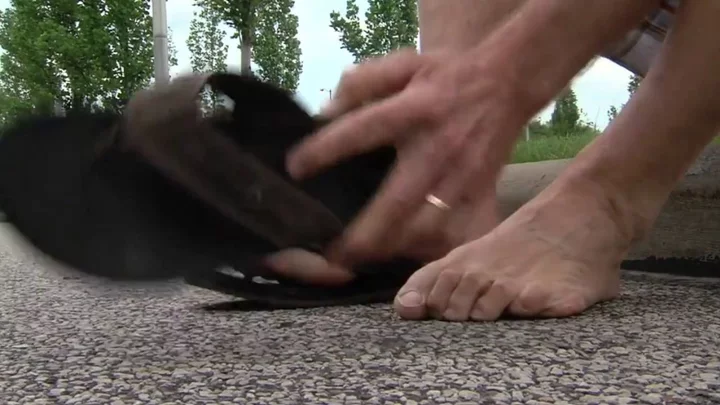
India Launches $2 Billion Drive to Woo Laptop Makers Like Apple
India is unveiling a 170 billion rupee ($2 billion) financial incentive plan to draw makers of laptops, tablets
2023-05-17 18:58

Activision Executives Were Briefed on New Nintendo Switch Last Year
Activision Blizzard Inc. executives were briefed on a next-generation console from Nintendo Co. as early as 2022, according
2023-09-19 00:56

Super Mario Bros. Wonder Pre-Order Bonus
Super Mario Bros. Wonder will come out later this year. Should you pre-order it?
2023-07-26 02:52

Earthbound solar storm could cause 'internet apocalypse'
Rumours of a global internet outage due to a severe solar storm have been swirling online, but how true are they? With plenty of us relying on internet access on a daily basis for our work, entertainment and communication needs, the rumour of an internet apocalypse has left many worried. Throughout June, the possibility that we could lose internet for months has been spreading. But, the very possibility first gained public attention back in 2021 when computer scientist Sangeetha Abdu Jyothi at the University of California Irvine warned that a catastrophic solar storm could occur within the next 10 years. Sign up to our free Indy100 weekly newsletter It seems the space agency NASA is taking the risk seriously and launched the Parker Solar Probe (PSP) which revealed clues about the sun’s atmosphere after successfully navigating through the powerful solar winds generated there. What is a solar storm and how could it cause an internet apocalypse? A solar storm refers to the atmospheric effects we experience on Earth that originate from the sun, typically caused by solar flares. During such storms, a stream of an electromagnetic field is directed towards Earth which causes the aurora borealis. NASA believes solar storms run on an 11-year cycle with their frequency varying. Their severity can also vary, with stronger geomagnetic storms causing interruptions to satellite, radio and internet functions. A 2011 geomagnetic storm interrupted radio signals in South China, meanwhile in 1859 a particularly intense storm caused auroras to appear in the skies all around the world. Should such an event strike today, there could be a worldwide blackout causing disruption for months, with its effects predicted to be 20 times that of a catastrophic hurricane due to its impact on the supply chain of essentials like foods and medication. Have your say in our news democracy. Click the upvote icon at the top of the page to help raise this article through the indy100 rankings.
2023-06-27 18:17

Covalon Announces Participation in APIC Annual Conference & Exposition on June 26 – 28, 2023 in Orlando, Florida
MISSISSAUGA, Ontario--(BUSINESS WIRE)--Jun 26, 2023--
2023-06-26 19:59

'Apple GPT' is already being used by Apple employees, might be used for AppleCare
Apple reportedly doesn't know how its generative AI tech will look for consumers products, but
2023-07-25 01:15

Time to Buy? PC Prices Fall Amid Decreasing Demand
After experiencing a pandemic sales boom, the PC market is facing tough times due to
2023-06-15 00:54

Doctor says scientists secretly made a ‘humanzee’ by mixing humans with chimps
Chimpanzees are our closest relatives, so it’s not surprising that they can do many of the things that we can. They’re able to create tools and can even use sign language, plus they share 98.8 per cent of their DNA with humans. It is, therefore, no wonder that the question has often been asked: could humans and chimps ever produce offspring? The answer, according to one evolutionary psychologist, is yes – and it’s already happened. Gordum Gallup made the eyebrow-raising claims in an interview with The Sun Online back in 2018. He told the news site that a human-chimpanzee hybrid – which he dubbed a “humanzee” – was born in a Florida lab 100 years ago. And if you’re wondering how the scientists behind the experiment managed to keep it hushed up for decades, it’s because – according to Gallup – they swiftly killed the infant when they realised the implications of what they’d done. Gallup, a professor at New York’s University at Albany, said his former university teacher told him that the secret birth took place at a research facility in Orange Park, where he used to work. “They inseminated a female chimpanzee with human semen from an undisclosed donor and claimed not only that pregnancy occurred but the pregnancy went full term and resulted in a live birth,” the psychologist told The Sun. “But in a matter of days, or a few weeks, they began to consider the moral and ethical considerations and the infant was euthanised.” Putting Gallup’s unsubstantiated story to one side, it’s unclear whether a human-chimpanzee hybrid is even possible. Some experts believe that our human ancestors and chimpanzees may have been capable of interbreeding as late as 4 million years ago according to IFL Science, which notes that our last common ancestor lived 6-7 million years ago. However, the website also notes that this theory is widely contested. It also points out that other animals with similar genetic differences to that of humans and chimps, such as horses and zebras, have been able to reproduce. And yet, the offspring are often infertile. Nevertheless, back in the 1970s, plenty of people believed that a chimp called Oliver was a human-monkey hybrid thanks to his humanistic walk, intelligence and physical features (he was said to have a smaller, flatter face than his ape peers, according to Historic Mysteries). It wasn't until tests were conducted on Oliver in 1996 that the matter was finally settled: he had 48 chromosomes so was categorically not a humanzee but a regular chimp. Oliver The Humanzee www.youtube.com Still, one certainty is that scientists continue to tread an ethical tightrope when it comes to investigating chimps and their potential to further biomedical research. In 2021, scientists created the first (publicly documented) part-monkey, part-human embryo by growing human stem cells in a macaque monkey. The aim of the work, which was carried out at California’s Salk Institute, was to help create organs for transplants and improve our understanding of human development and disease progression. In 2020, a team of German and Japanese scientists spliced human genes into the brains of marmosets, resulting in the monkey fetuses having larger, more human-like brains, according to the study, which was published in the journal Science. Once the experiment was complete, the team destroyed their creations “in light of potentially unforeseeable consequences with regard to postnatal brain function”. One thing’s for sure, no scientist wants to find themselves the architect of a real-life Planet of the Apes. Sign up for our free Indy100 weekly newsletter Have your say in our news democracy. Click the upvote icon at the top of the page to help raise this article through the indy100 rankings.
2023-08-31 00:18

Carmakers fail privacy test, give owners little or no control on personal data they collect
Cars are getting an “F” in data privacy
2023-09-06 12:29

Kamala Harris called out for awkward description of AI: ‘Kind of a fancy thing’
Vice President Kamala Harris has been left somewhat red-faced after a clip of her attempting to explain artificial intelligence was viewed more than 800,000 times. Ms Harris describing AI as a “fancy thing” during a roundtable with advocacy representatives has been roundly mocked, with many people comparing the answer to some of the gaffes that President Joe Biden has become known for. “I think the first part of this issue that should be articulated is AI is kind of a fancy thing, first of all, it’s two letters, it means artificial intelligence but ultimately ... it’s about machine learning,” Ms Harris said. “And so the machine is taught and part of the issue here is what information is going into the machine that will then determine, and we can predict then if we think about what information is going in, what then will be produced in terms of decisions and opinions that may be made through that process.” One Twitter user referred to Ms Harris’ description as being like “the introduction to a 6th-grade essay on AI”, while another suggested the vice president “always speaks as if she is talking to a room of 3rd graders”. “It’s nearly impossible to tell the difference between Kamala Harris speaking about AI and Bart Simpson’s book report on Treasure Island,” another user added. Ms Harris has previously been mocked for past comments, in particular after she told Today in January 2022 on the topic of the coronavirus pandemic: “It is time for us to do what we have been doing, and that time is every day. Every day, it is time for us to agree that there are things and tools that are available to us to slow this thing down.” The vice president currently has an approval rating of 39.2 per cent, according to polling averages from FiveThirtyEight, while President Biden has a slightly higher approval rating of 40.6 per cent. Read More Vice President Kamala Harris makes history with tiebreaking votes in Senate Kamala Harris arrives in Ghana to ‘deepen ties’ with country amid competition from China Ron DeSantis rules out being Trump’s running mate: ‘I’m not a number two guy’
2023-07-14 02:28

MSI Raider GE68HX 13VF Review
MSI has a heavyweight on its hands with the $1,799 Costco-exclusive Raider GE68HX 13VF. This
2023-08-24 07:55

'Honkai Star Rail': 5 reasons why HoYoverse game is dethroning 'Genshin Impact'
Honkai Star Rail is garnering praise for its amazing visuals and smooth gameplay
2023-05-14 21:52
You Might Like...

How to Get Dune Sardaukar Operator in Warzone

Dedrone Named to the 2023 CNBC Disruptor 50 for Innovative Leadership in Counterdrone Technology

Alpha and Omega Semiconductor Announces Application-Specific EZBuck™ Regulator to Power 5V System Rails

KYOCERA Announces FOREARTH, a New Sustainable Inkjet Textile Printer

NASA reveals gash on moon left by crashed Russian spacecraft

Here's why it is 2016 in Ethiopia

Foot doctor reveals why you shouldn't wear flip-flops, even in summer

How to Double Jump in Fortnite
